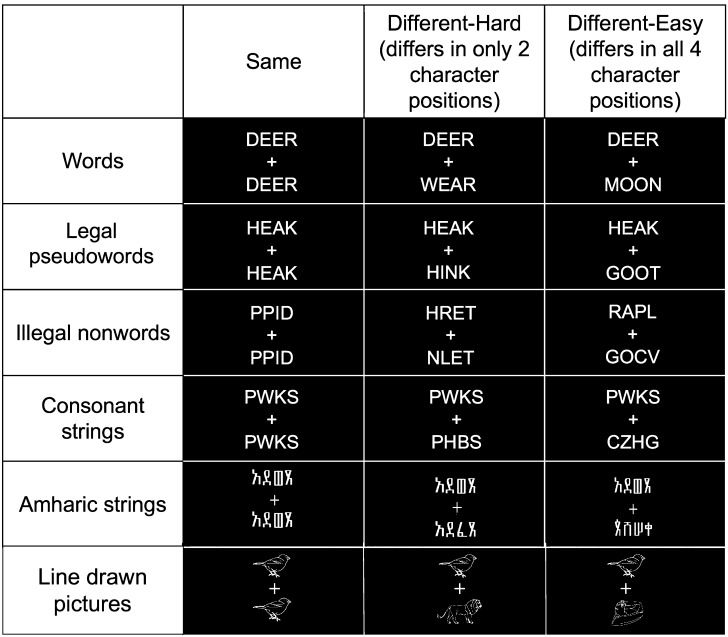Figure 1.
Examples of stimulus pairs. Six types of stimulus pairs were used in a visual matching judgment task. Fifty percent of the pairs presented were the same (as seen in the second column), 25% were hard, 2-character different pairs (as seen in the third column), and 25% were easy, all different pairs (as seen in the fourth column). In the picture-matching run (bottom row), pictures were drawn from the same semantically related category for the hard condition and from separate semantic categories for the easy condition.

